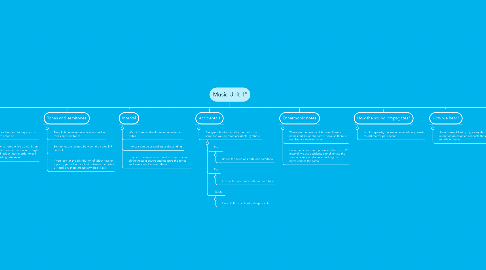
1. Notes
1.1. These are the names we use to designate the pitch of sounds. There-fore, each note corresponds to a different pitch:
1.1.1. C- do
1.1.2. D- re
1.1.3. E- mi
1.1.4. F- fa
1.1.5. G- sol
1.1.6. A- la
1.1.7. B- si
2. Scale
2.1. It is te ordered sequence of ascendin or descending notes
3. Interval
3.1. We call interval the distance between two notes
3.2. Intervals can be ascending or descending
3.3. In order to analyze an interval we have to count all the notes it covers and measure the tones and semitones between them
4. Accidentals
4.1. Are symbols which modify the pitch of a semitone we use three accidental symbols:
4.1.1. Sharp
4.1.1.1. Raises the pitch of a note one semitone
4.1.2. Flat
4.1.2.1. Lowers the pitch of a note one semitone
4.1.3. Natural
4.1.3.1. Cancels the effects of a sharp or a flat
5. Staff
5.1. It´s a group of five lines and four spaces that we used to write notes on
5.2. If we need to write notes which do not fit on the staff because they are too low or to high, we have to add ledger lines in order to still have a clear reading reference
6. Tones and semitones
6.1. The pitch between notes is measured in tones and semitones
6.2. Semitones are located between the notes E-F and B-C
6.3. If you look at the distribution of black keys on a piano, you will notice that between the notes E-F and B-C there are not any black keys
7. Enharmonic notes
7.1. These are the notes which have different names but sound the same, because there is no distance between them
7.2. Enharmonic notes are produced when, in a 2º interval, we use accidentals to eliminate the tone or semitone distance, making the two notes sounds the same
8. How the sound propagates?
8.1. At high speeds, the waves travel trhough earth at 340 metres per second
9. How we hear?
9.1. Sounds are picked up by a very thin membrane in our eardrum which connects the outer and middle of the ear
10. Rests
10.1. Is the absence of sound, the lack of hearing sensation. Actually, there isn´t such thing as absolute silence
10.2. Functions
10.2.1. Is an element as important as sound in music
10.2.2. It is the indispensable previous condition to enjoy music
10.2.3. It serves as a break, to catch one´s breath
10.2.4. It is a resource of great expressive energy
10.2.5. It makes it possible to organize ideas and give structure to the whole composition
11. Qualities of sound
11.1. If the sound is high or low, that is the pitch
11.1.1. Depends of wave frequency or vibration speed
11.2. If the sound is long or short is the duration
11.2.1. Depends on the wave persistance
11.3. If the sound is loud or soft, that is the intensity
11.3.1. Depends on the wave amplitude
11.4. If the sound comes from a voice or an instrument, is the timbre
11.4.1. Depends on the mixture of root and harmonic sounds
